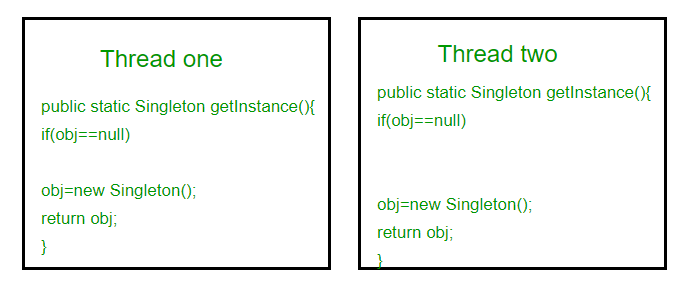Singleton Design Pattern
Singleton Design Pattern | Implementation
The singleton pattern is one of the simplest design patterns. Sometimes we need to have only one instance of our class for example a single DB connection shared by multiple objects as creating a separate DB connection for every object may be costly. Similarly, there can be a single configuration manager or error manager in an application that handles all problems instead of creating multiple managers.
Definition
The singleton pattern is a design pattern that restricts the instantiation of a class to one object. Let’s see various design options for implementing such a class. If you have a good handle on static class variables and access modifiers this should not be a difficult task.
Method 1: Classic Implementation
// Classical Java implementation of singleton
// design pattern
class Singleton
{
private static Singleton obj;
// private constructor to force use of
// getInstance() to create Singleton object
private Singleton() {}
public static Singleton getInstance()
{
if (obj==null)
obj = new Singleton();
return obj;
}
}
Here we have declared getInstance() static so that we can call it without instantiating the class. The first time getInstance() is called it creates a new singleton object and after that it just returns the same object. Note that Singleton obj is not created until we need it and call getInstance() method. This is called lazy instantiation.
How to Singleton in Tread
The main problem with above method is that it is not thread safe. Consider the following execution sequence.

This execution sequence creates two objects for singleton. Therefore this classic implementation is not thread safe.
Method 2: make getInstance() synchronized
// Thread Synchronized Java implementation of
// singleton design pattern
class Singleton
{
private static Singleton obj;
private Singleton() {}
// Only one thread can execute this at a time
public static synchronized Singleton getInstance()
{
if (obj==null)
obj = new Singleton();
return obj;
}
}